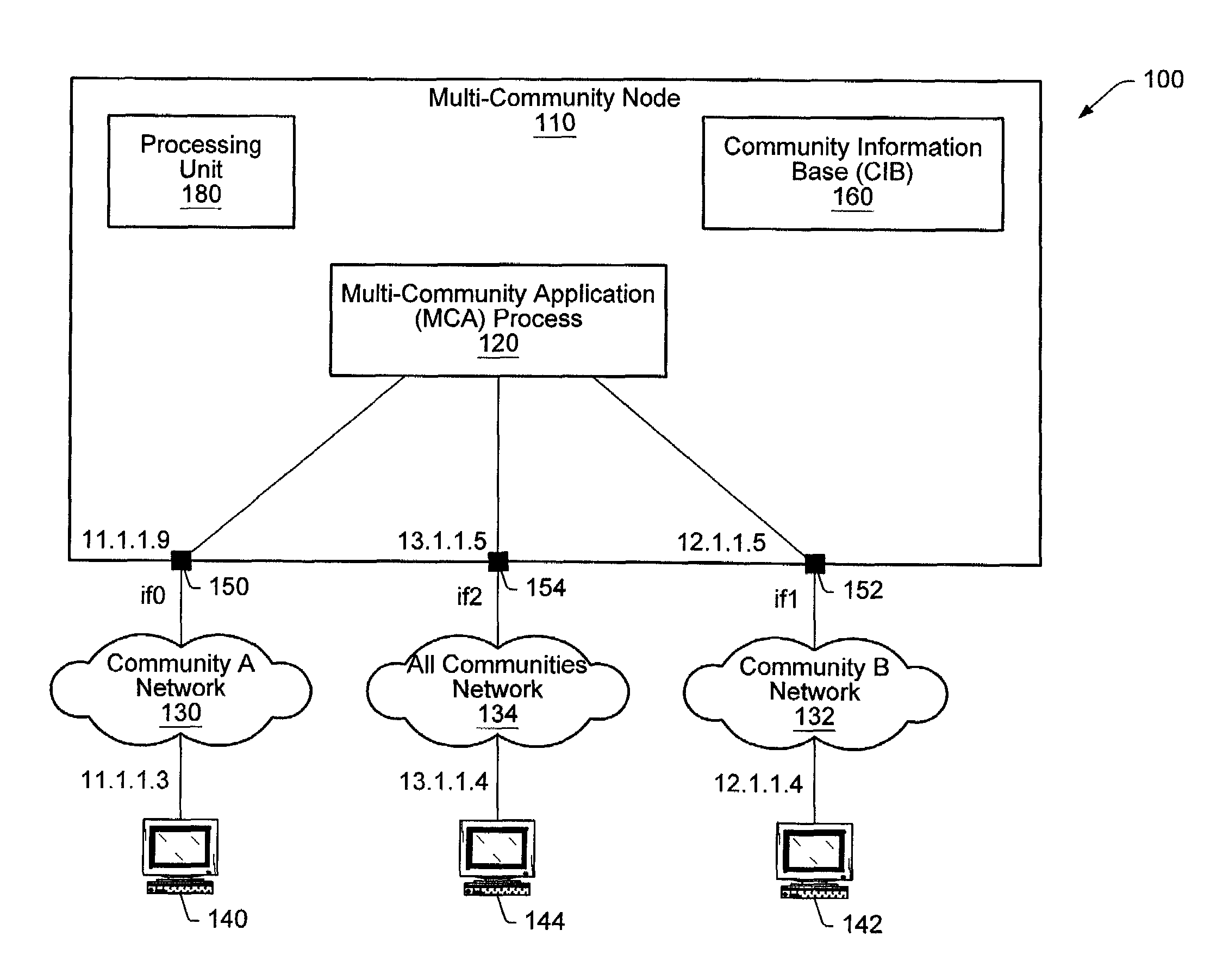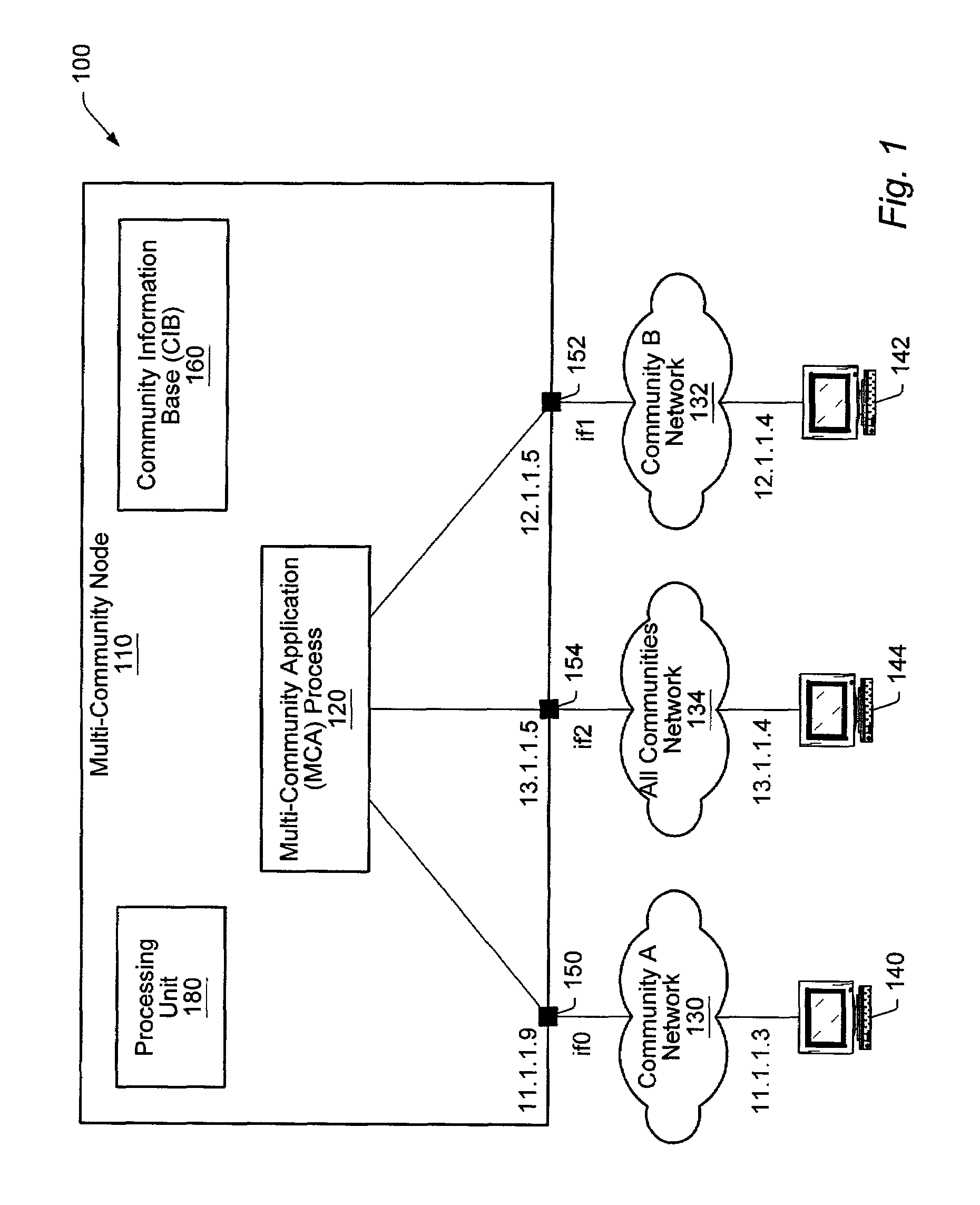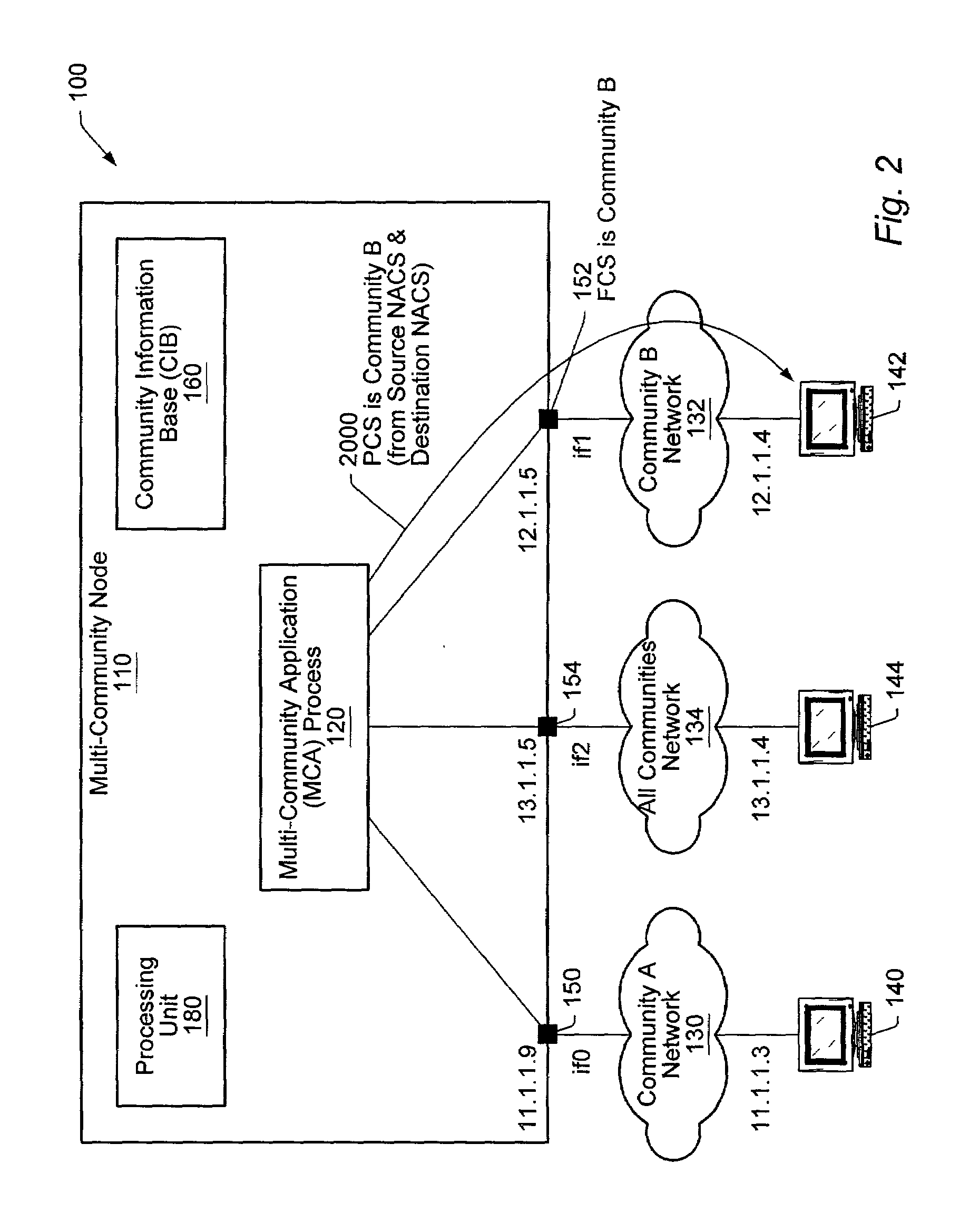Community access control in a multi-community node
a multi-community, access control technology, applied in the field of computer network security, can solve the problems of insiders inadvertently leaking information to another community, data packets from his community being misrouted, and security of computer network data
- Summary
- Abstract
- Description
- Claims
- Application Information
AI Technical Summary
Benefits of technology
Problems solved by technology
Method used
Image
Examples
Embodiment Construction
Overview
[0031]Turning now to FIG. 1, a diagram illustrating one embodiment of a computer network 100 is shown. Included in computer network 100 is MCN 110, a node serving a set of user communities including communities A, B, and any other communities in network 100. Also on network 100 is another MCN, 144, serving the same communities as MCN 110, and two single community nodes: a community A node 140, and a community B node 142.
[0032]Community network 100 contains three subnetworks. Network 130, used for community A communications, Network 132, used for community B communications, and network 134, used for communications between MCN 110 and MCN 144 which could potentially contain data for any community.
[0033]MCN 110 includes interfaces if0150, if1152, and if2154. MCN 110 also includes a Multi-Community Application Process (MCA) 120, which is assumed to be trusted not to leak data between communities, and Community Information Base (CIB) 160. Community A network 130 is coupled to MCN...
PUM
 Login to View More
Login to View More Abstract
Description
Claims
Application Information
 Login to View More
Login to View More - R&D
- Intellectual Property
- Life Sciences
- Materials
- Tech Scout
- Unparalleled Data Quality
- Higher Quality Content
- 60% Fewer Hallucinations
Browse by: Latest US Patents, China's latest patents, Technical Efficacy Thesaurus, Application Domain, Technology Topic, Popular Technical Reports.
© 2025 PatSnap. All rights reserved.Legal|Privacy policy|Modern Slavery Act Transparency Statement|Sitemap|About US| Contact US: help@patsnap.com



